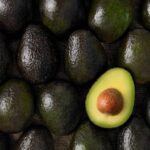100 million years of avocado history: A legacy of nature and human perseverance

By Mexico’s Avocado Producers, Packers and Exporters Association (APEAM).
The history of the ahuacatl is a fascinating journey spanning millions of years of evolution, from prehistoric times to its role as a major export product today. The avocado (Persea americana Mill.) is more than just a fruit: it is a witness to the evolutionary history of the planet. It is a member of the Lauraceae, some of the oldest flowering plants widely disseminated more than 100 million years ago.
35 million years ago ...
The evolution of these ancient plants began during the Pangaea rift. They migrated through the Sea of Tethys to what is now Europe and, with the passage of time and geological changes, the Persea spread throughout the Northern Hemisphere, where high temperatures prevailed and the continents were not yet separated by oceans or mountains.
Global cooling, 32 million years ago, caused the extinction of many of these European plant lineages and led to the forced migration of others southward. The same thing happened in the Americas. The avocado’s ancestors began to migrate to warmer regions: the tropical and subtropical zones of the continent.
Domestication in Mexico

Packing house in Mexico.
The Tehuacán Valley in Mexico is an archaeological treasure trove with perhaps the best model for archaeological exploration of agriculture: there is no other place in either the Old or New World that reveals such a detailed history.
Research has shown that avocado was part of the diet of ancient civilizations 10,000 years ago. And a thousand years later, it was already being cultivated in the region of present-day Michoacán.
The fruit occupied a prominent place in Mesoamerican cultures. Almost all of them developed specific words to give it a name, especially the Nahuatl term ahuácatl, which later the conquistadors “Spanishified” as avocado.
A new impulse
By the 1950s, in Mexico, it became essential to conquer new avocado markets beyond Mexico's borders. The sector began exploring the possibility of exporting to other countries such as Japan, Canada, and France. However, the United States market remained closed despite attempts in the 70s and 80s.
The blooming industry not only required quality but quantity of production. One of the lessons learned by those involved in the crop was that, to prosper, it was necessary to stay organized. That is why in 1997, Mexico’s Avocado Producers, Packers, and Exporters Association (APEAM) was born. By 2001, it achieved the first export expansions to the United States, while in 2007, it consolidated the total opening of the neighboring country.
The legacy of the avocado endures not only on the table of millions of people around the world, but also as a symbol of the rich cultural and agricultural history of Latin America.








































